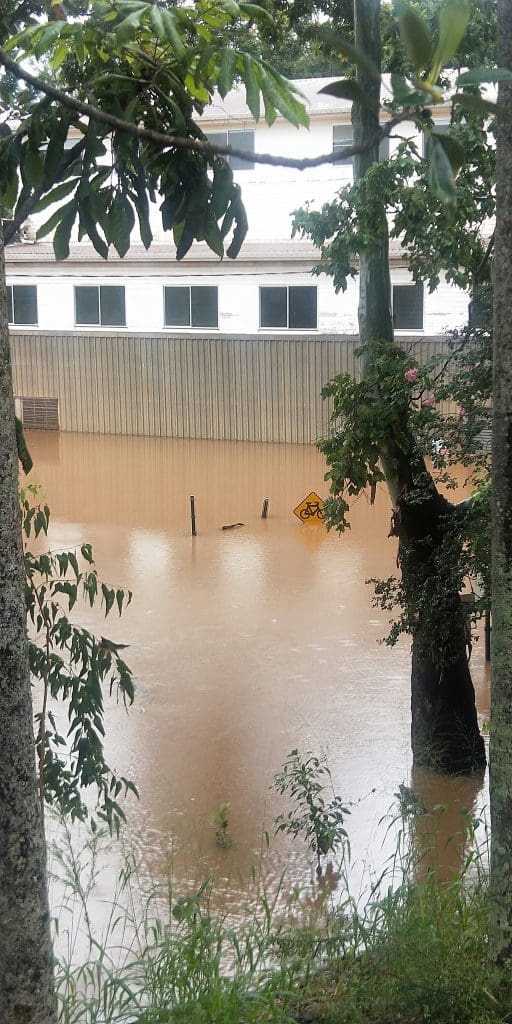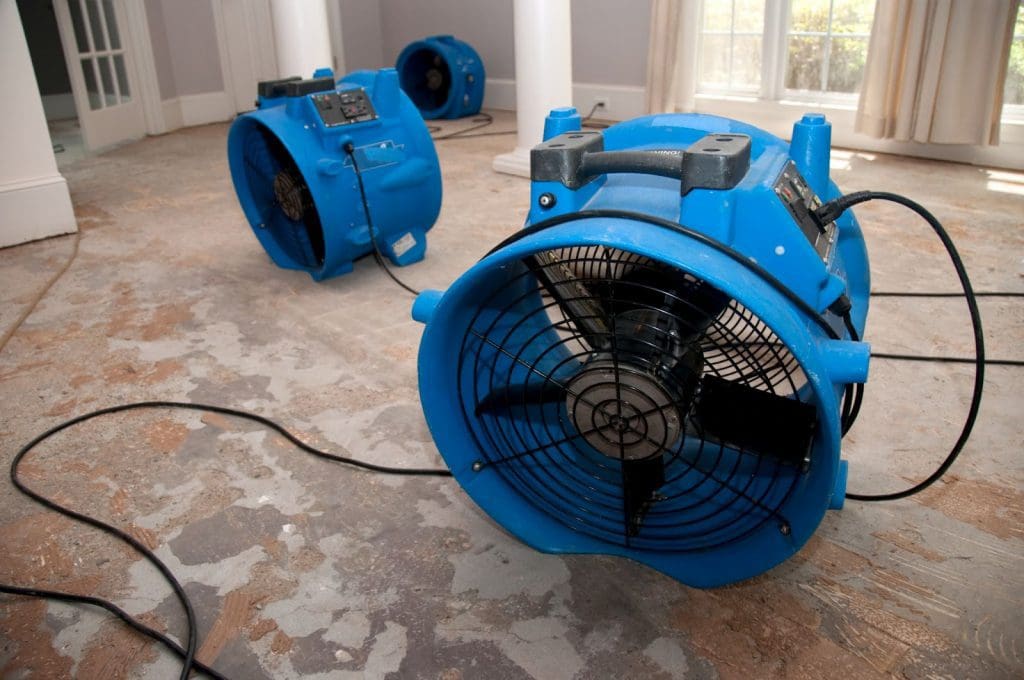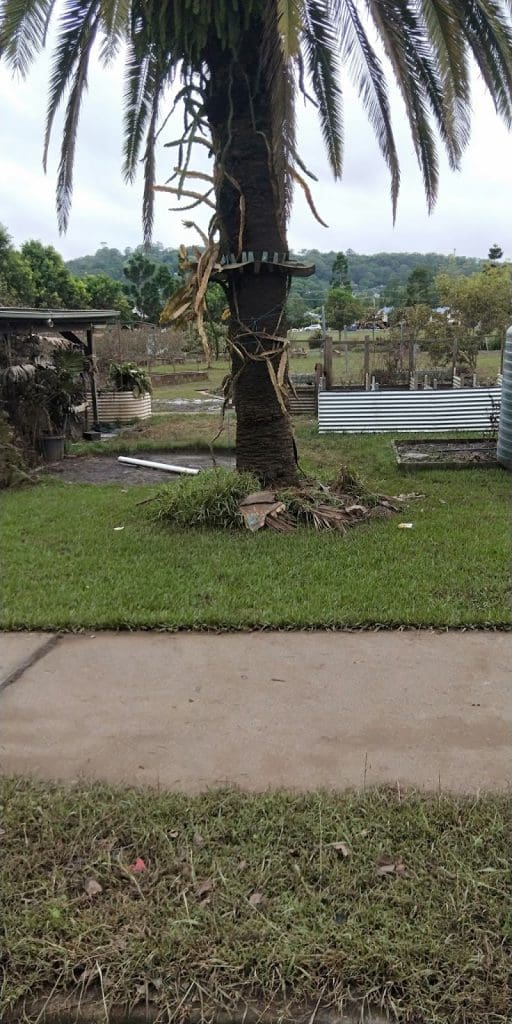
Sadly many areas have experienced flooding recently. With clean up and repair operations either about to begin, or now in full swing in many regions, there are ways to make the process safer for you, your community, and local environment.
Floodwater hazards
Floodwater can contain contaminants, bacteria, debris, and even dead animals. While it is tempting to start cleaning as soon as possible whilst removing mud is easiest, ensure you do not wade into floodwaters. They can be deeper than they look, there may be hidden debris or damage to structures underneath such as roads and driveways, and your house may not be structurally sound. You are also putting yourself at risk of being exposed to bacteria and viruses (particularly as floodwater often contains sewerage), and depending on your location may also be exposed to contaminants such as oils or fuels, trapped gases, and agricultural or industrial chemicals.

Returning to your property
Before you return to your property, an assessment is required to ensure it’s still structurally-sound. This can be carried out by a structural engineer, building certifier or licensed builder. Electrical assessments must also be carried out by a qualified electrician, and plumbing should be inspected by a qualified plumber. If you have a gas connection, ensure this and associated plumbing and piping has also been inspected by a licenced contractor – as a general rule, even if you do not have a gas connection, do not smoke or have naked flames near flood-affected areas, as loose gas bottles or trapped gases may be present, and old gas connections or neighbouring connections may be damaged.
Once the relevant inspections have occurred and you have been cleared to re-enter your neighbourhood and home by your assessors, local council and local emergency authorities, you may begin the clean up and repair process. Ensure you take plenty of photographs before any work starts, particularly for insurance or disaster funding reasons.

PPE and hygiene
Try to ensure you have the correct PPE for the job. Gumboots or other sturdy enclosed footwear is often advised. Wear gloves – depending on the task, these could include rubber or nitrile gloves for cleaning, and gardening or industrial protective gloves for removing debris and building materials. Duct tape around tops of boots and gloves can be used to prevent water seepage. Masks and eyewear are also helpful for minimizing exposure to dried mud that becomes airborne dust, and to reduce splashes from residual floodwater into the eyes, nose or mouth. Regularly wash hands well with soap and water, particularly before and after using the toilet, eating or drinking – use alcohol-based hand sanitizer where soap and water are not available. Ensure all cuts and abrasions are covered by a waterproof dressing and cleaned after showering when you have completed clean-up for the day, that you wear thick socks in boots to avoid getting blisters that rupture and become open sores, and that you seek medical advice immediately if any cuts or abrasions become infected or you are wounded whilst completing flood clean-up. This is particularly important to take note of if you are a business owner or manager and are directing your employees back to work to assist with cleaning, as you still need to ensure your staff remain safe.
Carpets and soft furnishings
It is generally advised to remove and dispose of any soft furnishings such as mattresses, or carpets exposed to floodwaters as a matter of urgency. These items can quickly become a health hazard when mould or bacteria grow on and in these items.
Walls and ceilings
A pressure cleaner makes removing mud from walls and ceilings much easier, but be aware this could further disintegrate these structures – you do not want a plasterboard ceiling collapsing on top of you, or to be exposing yourself to asbestos through the strong jets of water affecting the structure of asbestos sheeting. Floodwater-affected plasterboard and insulation may also need to be removed from the property to reduce the risk of mould, and to ensure there is not water still trapped in the walls. If asbestos needs removing from the property, ensure this is completed by a licenced contractor. Also ensure you remove any mould-affected glues or sealants.
Swimming pools, bores, septic tanks and water tanks
It’s likely you’ll need to restore pools, spas and water tanks following a flood to ensure they are still watertight and structurally sound, and to ensure water is safe to drink or swim in. For pools and spas, contaminated water will need to be disposed of – it’s best to contact your local council as particular disposal regulations may apply in your region. The pool/spa and surrounding structures will all need to be sanitized and electricals checked by a licenced electrician prior to refilling and using. Your nearest pool shop should be able to provide advice on safely emptying your pool to maintain structural integrity, and the best sanitisers to use for your particular pool type. For water tanks affected by floodwaters, the tank may need to be drained of water and the tank, plumbing, and roof surfaces sanitized to ensure harmful organisms do not breed in your water supply – this may require a professional tank cleaner, especially where the tank must be entered to be cleaned, and it is important the tank and plumbing is checked for structural integrity and emptied properly so this is not compromised. When this has been completed, re-fill from a safe source, and add enough chlorine to give an initial chlorine dose of 5mg/L.
As a general guide:
Make sure you always follow the warnings, directions for use and safety precaution advice on the chlorine product label, SDS and risk assessment where appropriate, and after adding the chlorine, allow the water to stand for at least one hour (but ideally overnight).
If you suspect your bore may have been contaminated, ensure any water for household use such as drinking, cooking, etc is brought to a rolling boil before it is utilized. Alternatively, use a different source of water such as bottled water or rainwater, and contact the relevant state authority if you experience ongoing issues with your bore water following a flood.
Septic tanks may have filled with silt and will need pumping out to ensure the sewerage system in your home is operating correctly and in a sanitary manner. It is best to get this tank emptying done by the appropriate contractor, such as a council-approved sludge removal tanker. You can check if your septic tank needs pumping with the use of a dipstick – if solids or silt fill more than 1/3 of the tank it needs pumping out. Also keep in mind that wet or flooded soil surrounding the tank means the septic system may not function correctly, so only essential toileting waste should be discharged into the tank at this time.

Air conditioners
These units may need to be repaired and cleaned by the appropriate repairers. Cooling coils may also need to be cleaned with purpose-made solutions.
Food and medicine items
Unfortunately most food may need to be disposed of. Even if your fridge or freezer was not directly damaged, power outages in your area may have left food to spoil or defrost if it has been many days since the power has been off or you have been able to get home to check food items. Items in direct contact with floodwaters will need to be thrown out, as will any wet boxes, dented, bulging or broken cans, and bottles or containers that have screw-tops, flip-tops, crimped lids, or snap-lids. For food in containers that are still safely sealed such as cans, the outside should be washed and sanitized, and any paper labels removed – these containers should be re-labelled with important information about the item, such as what it is, expiry dates, etc. Any foods that have an unusual appearance, smell, colour or texture should also be disposed of. Do not take any medicines that have been exposed to floodwaters – these should be disposed of as per your local council guidelines.
Children’s toys
Any soft toys, or moulded ones with an air injection hole, such as many plastic, rubber and some silicone toys, should be disposed of. Solid toys should be washed in warm soapy water, rinsed, and then sanitized and air dried in a clean location.
Kitchens
Fridges and other electrical equipment may be damaged – some of these may be able to be salvaged by a repairer and sanitized appropriately. However, you should not use flood-affected dishwashers, and many electrical items may need to be disposed of. When cleaning up, try to group these items together, as electrical waste is disposed of differently to general waste in some areas.
Other items can be washed in warm soapy water and rinsed, followed by sterilization. Metal cutlery and kitchen implements such as slotted spoons can be boiled for 10+ minutes –do not use bleach on these items as this reacts with the metal. Crockery, glassware and enamelware can be immersed in a food-safe sanitizing solution (such as bleach solution – 1 tablespoon of bleach per 2 litres of water) for 10 minutes+ then air dried in a clean location – do not towel dry. As dishwashers not affected by floodwater can be used to sterilize items, you can place items in here for sterilization, including pots and pans that can be washed at a higher heat cycle.
For any porous items, such as those made from wood or rubber, you’ll need to dispose of these as they cannot be adequately sanitized. The same goes for any cracked or damaged crockery.
Cupboards, counters and benches should be washed with warm soapy water and then cleaned with a bleach solution and left to air dry.
Hazardous waste removal
Hazardous waste materials can involve both household and industrial chemicals, including substances such as:
These should be set aside in a separate pile for specialist collection or disposal (not on the kerbside), as directed by your local council – some municipal recycling centres will take these materials used in households free of charge. You can also contact your state environmental authority (EPA) for more information on disposal of hazardous materials and locations near you that you can dispose of these materials.
Animals
Animals should receive veterinary attention as soon as possible if they appear unwell after experiencing flood. Sadly some animals will not survive flooding, and particularly if you are in a rural or regional area you may find animal carcasses as part of your cleanup. These should be handled as little as possible, whilst wearing correct PPE such as gloves, leather or rubber boots, clothes that cover exposed skin, eye protection and a P2 face mask. Avoid contact with any body fluids from any deceased animal you find, and follow council directions for disposal of dead pets, livestock, and wild animals in and around your building.
Keep in mind, you need to keep an eye out for live animals that aren’t usually at your home or business too - there are also physical bite, venom and illness hazards posed by rodents, spiders, snakes and other animals trapped or seeking refuge in your buildings. Mosquitoes breeding in floodwaters or other nearby puddles or containers filled with stagnant water can also pose a risk of illness, with a Japanese Encephalitis case already reported in South-East Queensland recently.
Sinks and drinking water
Sinks can be washed with hot soapy water and then sanitized (do not use bleach on metal sinks or taps). Run the taps for a few minutes to remove any contaminated water caught inside the tap or pipework. Remove taps, screens, flow regulators or similar items, and thoroughly clean and disinfect. After reassembling, run the tap for a few more minutes. Check with your local council before drinking the water or for other uses such as preparing bottles or food food infants, cooking or brushing teeth – if it's not currently safe to drink as-is, they may direct you may to boil your water or use bottled water.
Clothing and linen
Many clothing items can simply be hot washed or dry-cleaned to clean and sanitise them. It is advisable to rinse or soak them first until the water runs clear to remove as much silt or mud as possible before placing in a washing machine.
Furniture
Solid wood furniture can often be sanitized and dried for re-use. Chipboard furniture may have become waterlogged in the floods, and should be discarded as it often will not maintain its structural integrity after this level of water exposure. Some soft furnishings may be able to be salvaged, such as chairs with fabric padding – consult a furniture restorer for further details on your items.

General cleaning
First remove mud and debris from items and building surfaces – a pressure cleaner, hose or tub of water can be helpful for this. Many areas, particularly those with hard surfaces, around your home or business can be cleaned and disinfected with warm soapy water, or a sanitizing solution. A bleach-based general disinfectant can be made by combining 50mls (1/4 cup) of 4% household bleach, or 8-16mls (dessertspoon) of bleach with 10L of water. Cleaning implements such as mops and scrubbing brushes can also be sanitized in a disinfectant solution following cleaning. If generators or pumps are required for cleaning, particularly when they are petrol powered, ensure that you only use them in well-ventilated areas. The building should also be aired by opening windows and doors, and with use of fans, to ensure it is completely dried out and to discourage mould and mildew growth before repainting, renovating, or moving back in. Whilst cleaning, avoid touching your mouth, nose or eyes, as you could transmit bacteria or make yourself ill by ingesting cleaning chemicals.
Gardens, yards and property
Be mindful of debris that may be in your yard and garden unexpectedly and which could pose a risk to your health– such as gas bottles, shipping containers, hazardous chemicals, or broken glass. You may also find injured or dead animals, or ones you don’t typically encounter, such as livestock, snakes or rats. Ensure you empty any containers holding water to reduce the risk of mosquito-borne illness. It’s advisable to remove as much mud as possible with a hose, but ensure you are wearing appropriate PPE to avoid diseases such as meliodosis.

For vegetable and herb gardens contaminated by floodwaters, some produce can be salvaged, though all leafy green produce should be discarded as well as soft fruits like berries or melons and fruit and veg typically eaten raw. Gardens can take a month to become safe for use again following flood contamination. After the month is up, wash other vegetables that remain, then sanitise in a weak bleach solution of 1 tablespoons bleach to 2 litres of water, followed by rinsing in drinking-quality water, peel and then use.
In many areas, following a natural disaster such as flooding, property-owners are able to clear debris including vegetation that poses a risk to human life, buildings and property, or the environment, sometimes up to a year following the natural disaster. Contact your relevant state authority for more details, and guidelines that are appropriate for your region and situation.
Although we unfortunately can’t control natural disasters, we can help you control your chemicals and stay safer when undertaking the cleanup, repairs and rebuilding. We have many years of experience in SDS management, risk assessment, 24/7 chemical Emergency Response advice for products you sell or that are used in your workplace, Heat Mapping, and so much more. Contact us today at sa***@*******ch.net.
Sources: